The User’s Journey: Part II
In the previous post, we talked about why it’s important to think about conversion flow and some of the basic elements that make up the users journey accoss a web application. Today we’re going to jump into some high level strategies that are implemented.
The Conversion Flow Models
Summarized, Conversion flow is the way you set up the UI to drive the user to the action you want to take. There are many ways of going about this. However, there are some actions that can guide the user to increase the chance of them taking the desired end goal and steps to take along to the way to increase those odds.
The ultimate goal is typically a sign-up or payment. However, pushing users directly to a payment screen or registration form might cause drop-offs. Since some attrition is inevitable, there are methods to leverage that allow to capture of users information for retargeting later.
Basic Flow
This is the easiest of them all. You have landing page with calls to action that drives straight to sign up or the pricing page. Here the potential client has to make a decision to use the service right then and there. and pay for it.
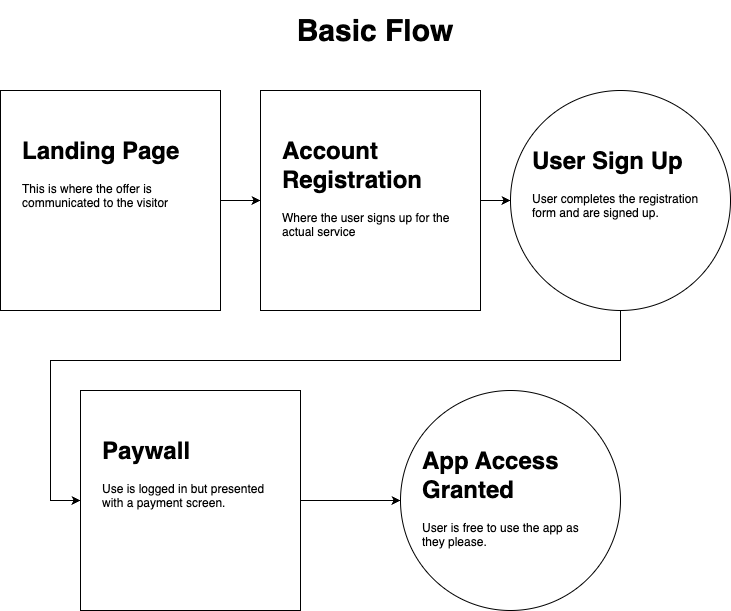
This is perhaps the most common and easiest to implement. Also, the user probably feels pressured into making a decision at that split second moment. They’re not warmed up at all. However, what you don’t get out of a set up like this is any personal information to try and re-target the user about interest in the product.
Trial Flow
If you have a paid application, and think that closing the sale is based on how the users will feel when they use the application this is the method for you. By offering a free trial, users can freely use it to see if it fits their style and workflow.
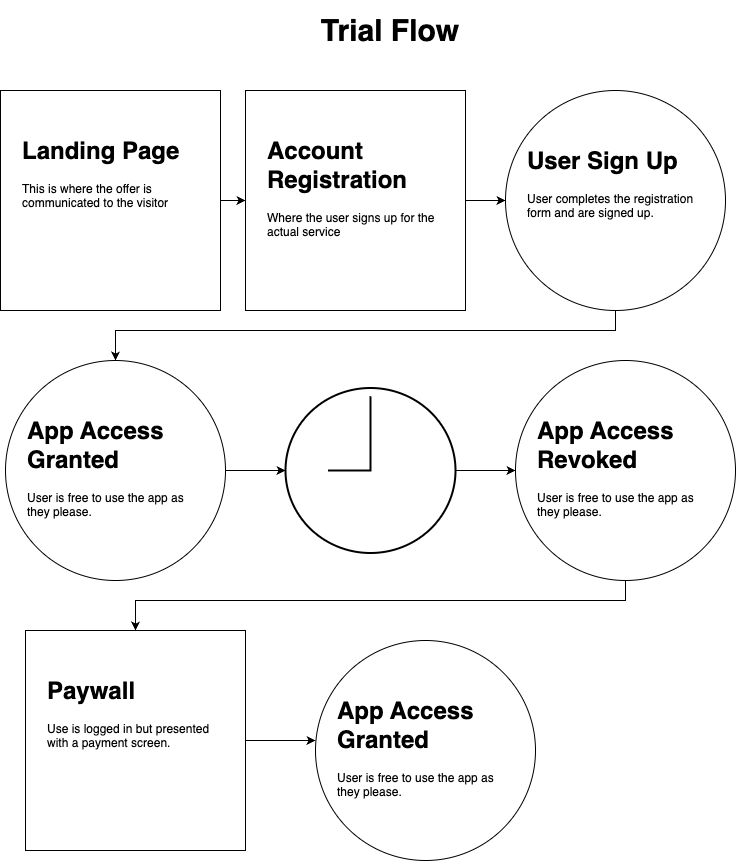
Trials may be difficult or not avaliable for certain products. This is true for things like information products and tools that solve a probablem on a one off basis. Also users may not love having to give a credit card, signing up for a service and then forgetting to cancel the memberhsip after the trial period. It can leave a sour taste in their mouth.
Freemium Flow
This is another very common strategy. Where users are allowed to sign up and use the app on the “free tier”. There are features that are gated behind paid tiers which help the customer get to their end goal. So in this strategy, they get to feel out the tool and accomplish some tasks with that. Now that they know it can fit in their workflows, they’re willing to pay.
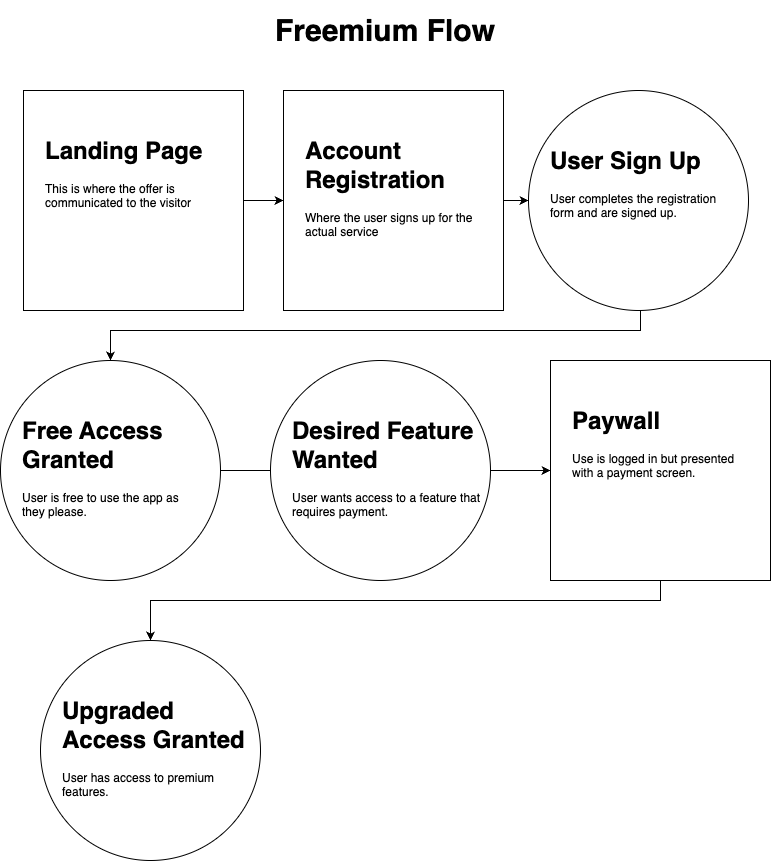
Free users can be tough to deal with. You will probably have to tier out support for these folks. Also, knowing what features to pay gate may not be clear at the begining, you don’t want to take too much functionality away where it’s unuseable without paying but you need that killer feature so people actually convert.
Basic Conversion w/ Email Capture
This is very similar to the first approach that we documented. However, the call to actions here more around a button. Only one basic piece of information and email.
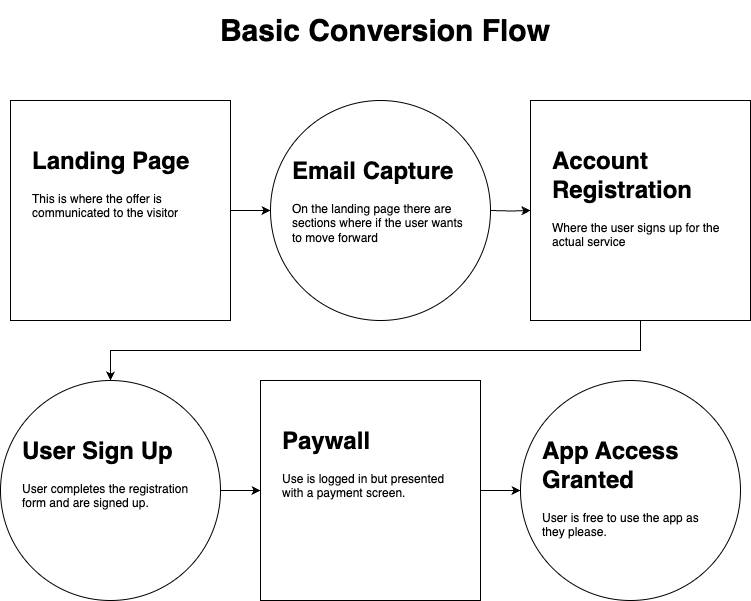
Once they provide us with the email, we then drive them to an action that we want them to take such as register or payment screen. This way if they fall off on the journey here we could re-target this user.
It’s still a basic approach, but it does prevent some of the issues that we’d seen previously. And it’s pretty simple to implement.
Taste Conversion Flow w/ Email Capture
This approach is a combination of the last two. We first leverage the user to science to start by giving an email. Once they give us an email then they can start using the application. For example, if they’re like some inputs that need to be given.
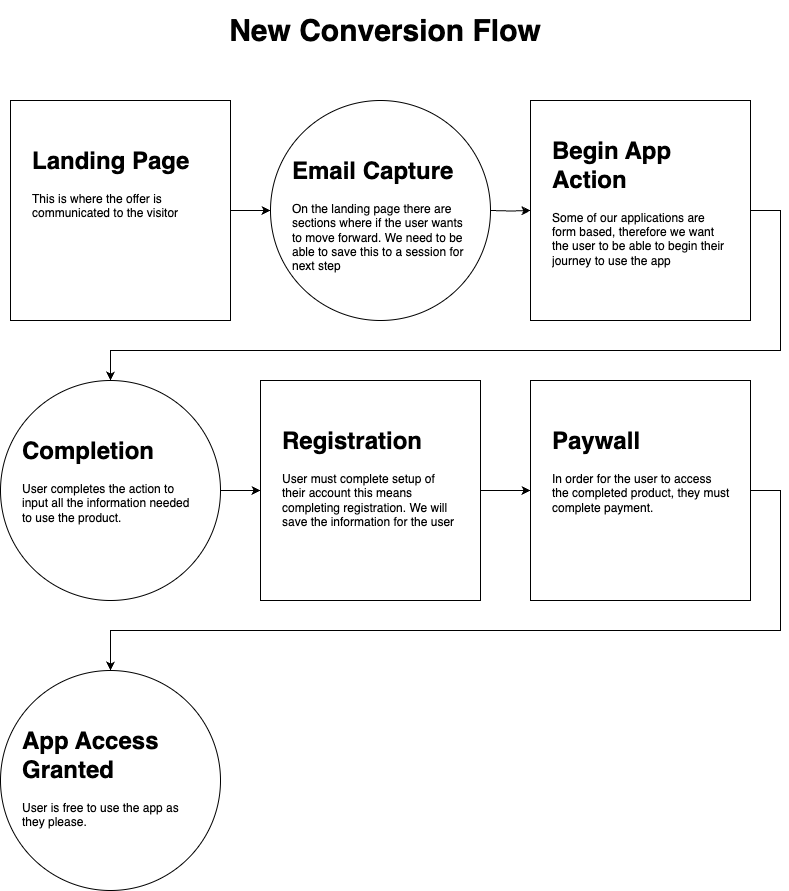
So now the user has completed the set of actions. Before they can access their end goal there then hit with the action we want to take whether that’s pay or register. This is why we call it. The taste action they get to experience the same usage that a regular user would, they don’t get the output of it until the action is taken. This stimulates them using the application and are invested because they put some time into setting up.
Is that it?
These again are some of the patterns I’ve seen and used. You can mix and match different tools from each and create a unique combination. Whatever works best for your application, use. Next we will be looking into implementations(code…) to see some of the technical “costs” of each one.
